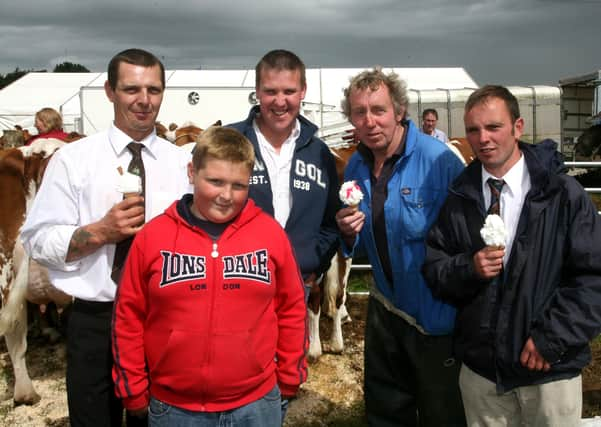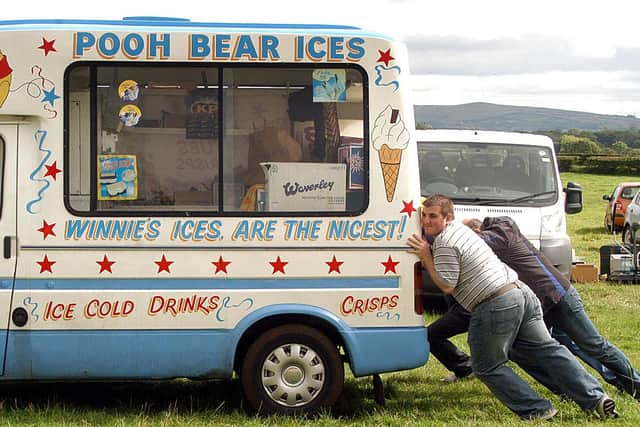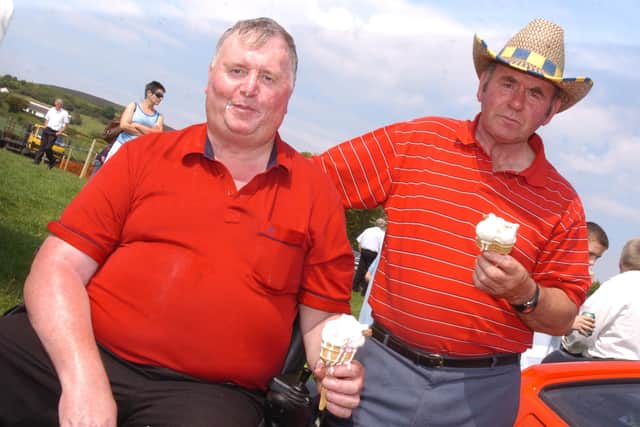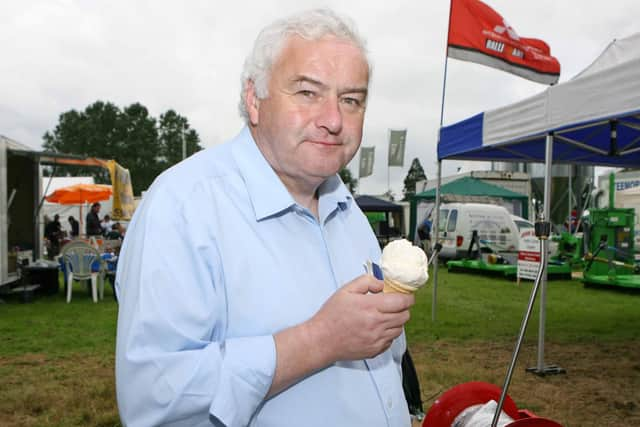BYGONE DAYS: Hopes that cream trade could yet be revived in NI


It came after a statement from the Eire Minister of Agriculture Mr James Dillon, who was holding talks with the British Minister of Food, Mr Maurice Webb, aimed at finding a British market for Eire farm produced foodstuffs.
Mr Dillon had stated: “We plan to ship cream here by air from Shannon. We should be able deliver cream in London faster than many deliveries from the more remote shires of England.”
Advertisement
Advertisement
Meanwhile, an official for the Ulster Ministry of Agriculture had been of the opinion that “Ulster cream could reach London by air as quickly as from Eire”.


“Before the war,” said the official, “when the Larne-Stranraer train was running normally the great bulk of our cream went by that route. It arrived in London at 7.30 the following morning.”
It was noted that the method of transportation rested with the manufacturer, the informant had said, and they said that they would have to compare the respective costs.
“But if the manufacture of cream is re-started,” the official said, “I presume it will be another controlled product.”
Advertisement
Advertisement
The Agricultural Inquiry Committee which was appointed in 1943 by Lord Glentoran, then Minister of Agriculture, to “inquire into and report upon the future of agriculture in Northern Ireland and advise upon the steps necessary to effect its maximum development and improvement’’ stated in their report (also known as the Babington report) that it was necessary to approach post-war milk marketing in Ulster along certain lines, specifying that as one way to increase fresh milk and cream shipments to England. But owing to restrictions there had been no production of cream in the United Kingdom since shortly after the outbreak of the Second World War.


It was noted that of the total quantity of milk sold off farms in Ulster before the war only between 35 and 40 per cent, was sold for direct human consumption; the balance was sold for manufacturing purposes, principally for manufacture into butter or cream.
The quantity of milk sold for human consumption in the year ending March 31, 1940, was about 15,472,000 gallons; during the year ending March 31, 1946, it was 30,707,000 gallons in Ulster, plus 3,231,000 gallons sent to Scotland - a total increase of almost 165 per cent. During the latter year some 5,320,000 gallons were used for condensing in Ulster and 3,473,000 gallons for drying. No milk was condensed in the year ending March 31, 1940 – there was no factory for this purpose - and the quantity dried was only 538,000 gallons. The quantity used for butter manufacture was approximately 21,932,000 gallons In the year ended March 31, 1940, plus approximately 2,420,000 gallons for cream for sale such. In the year ended March 31, 1946, the gallonage used for butter manufacture was 17,935.000.
The Agricultural Inquiry Committee stated: “In the future there should be the opportunity of reviving the valuable trade in fresh cream which existed pre-war, but which has been prohibited in the meantime. The war has, in addition, revealed the possibilities which may exist in the shipment of fresh milk from Ulster to deficiency areas in Great Britain.”
Advertisement
Advertisement
Meanwhile, South Down Unionist MP Captain Lawrence Percy Story Orr had sent a telegram to the British Minister of Food declaring: “Suggest any contract with Eire Republic be conditional on their agreeing to repudiate lying propaganda against Northern Ireland. Mr Dillon should be asked to withdraw recent offensive references to Sir Basil Brooke [the Northern Ireland premier].”


Death of noted Shorthorn breeder
It was noted this week in 1950 that the death had occurred of Mr William J Gray, JP of Cleaver Park, Belfast and formerly of The Priory, Tullyhogue, Cookstown, Co Tyrone. Mr Gray, prior to his retirement from farming a number years before the outbreak of the Second World War, was well known in cattle breeding circles in Ireland and across Channel. It was noted that he had specialised in Shorthorn, and his herd was one of the finest in Northern Ireland, took many awards both at the Royal Ulster Agricultural Society’s and Royal Dublin Society’s shows. He was a foundation member of the Mid-Ulster Shorthorn Breeders’ Association and a member of other cattle breeders’ organisations. He was survived by a son and daughter.
A belief in the supernatural ‘dies hard’ in rural Ulster
Writing in The Northern Whig at the start of April 1950 The Watchman noted that the old belief in the supernatural still held sway in Northern Ireland, “even in these enlightened days”. They noted that in the countryside that although most people would dismiss the idea of fairies and banshees there was still a “sneaking regard” for such old-time superstitions as the “blinking eyes” of cattle and “the evil eye”.
They wrote: “Proof of this is found in the existence all over the countryside of what are known as fairy-trees or wishing-trees. Time was when nearly every farm had its fairy-tree, and a colleague can recall at least three of them in a locality he hasn’t visited in 25 years, I wouldn’t mind wagering that today they are still standing and still treated with the respect due to them.”
Advertisement
Advertisement
They continued: “It was round such trees that fairies and “little men” were once supposed to gather and dance, at night, and woe betide the owner of the farm who damaged one of them. Bad luck, in the form of illnesses and death among his livestock, was certain to follow.”
The Watchman concluded: “Today that belief is still held – at least few people would have the courage to take the risk of cutting down the particular hawthorn or roan-tree that has come down to them through many generations with its tradition of influence for good or evil.”
Do these beliefs still hold in rural Ulster in the 21st century? Are you aware of any of these old tales? Email [email protected].